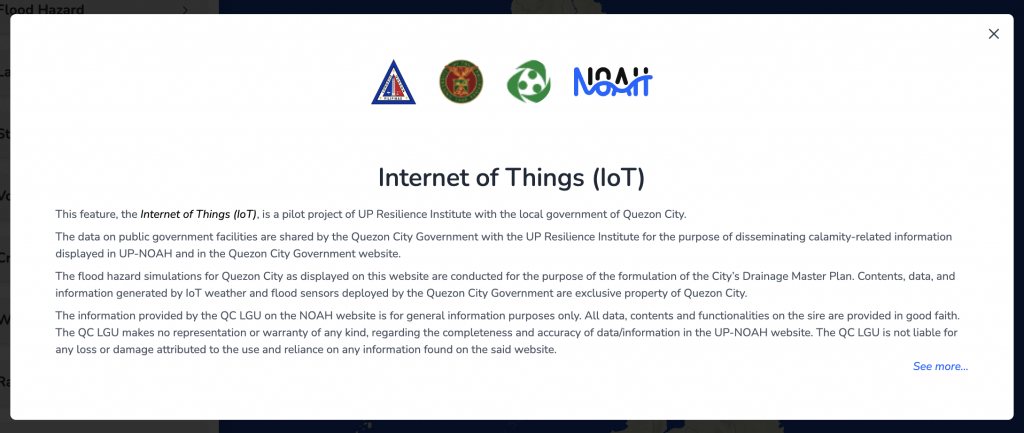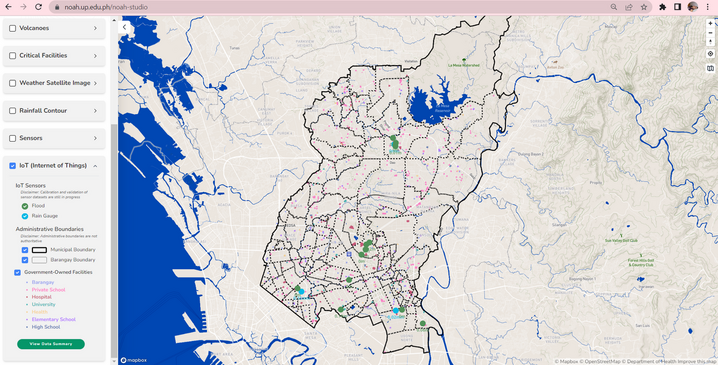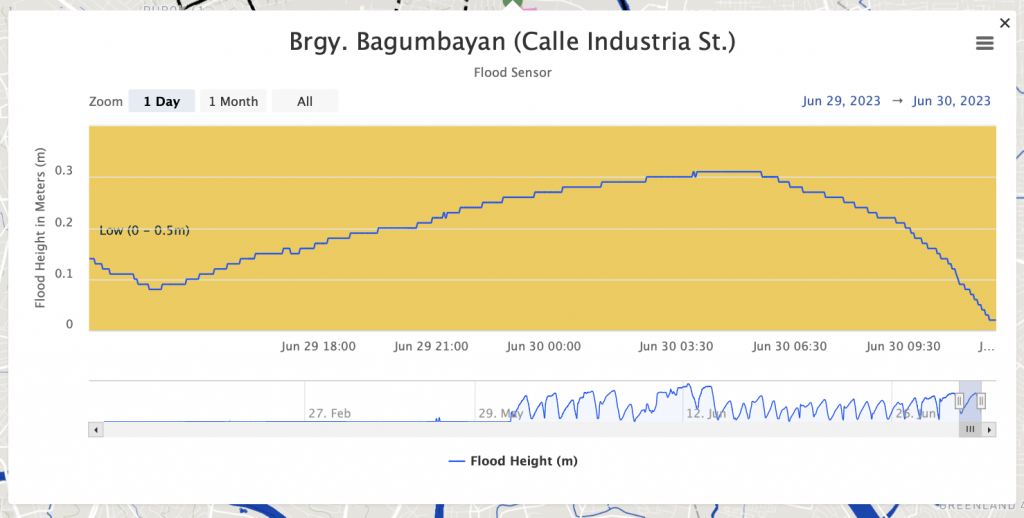In the interconnected world, modern technologies can potentially revolutionize how we tackle and address crucial issues. The Internet of Things (IoT) is one of the emerging innovations, a network of linked devices that exchange and share data. IoT has opened up innovative solutions in various fields thanks to its ability to gather real-time data and enable accessible communication.
The UP Resilience Institute – NOAH Center, in partnership with the local government of Quezon City, has embarked on an ambitious project to incorporate an IoT system for rain and flood monitoring, striving to improve emergency preparedness and response for both the public sector and government. IoT provides unprecedented precision and timeliness in tracking and analyzing essential data regarding precipitation and flooding scenarios, making it a powerful tool to address the damages caused by disasters brought by floods. These events are associated with significant loss of life, property destruction, and community financial disruption. Traditional means of monitoring weather patterns and anticipating floods have limitations; however, IoT can revolutionize this process.

This strategic partnership seeks to utilize the potential of the Internet of Things (IoT) to modernize flood monitoring and strengthen emergency response initiatives. As part of this partnership, IoT sensors with LoRaWAN capabilities are strategically installed throughout Quezon City, gathering real-time data on rainfall and flood levels. LoRaWAN is a Low Power, Wide Area networking protocol that offers a reliable and secure option for long-distance communication between sensors and network gateways. The sensors use a low-power design which minimizes power consumption of the LoRaWAN, making it cost-effective to deploy in remote or hard-to-reach areas. The flood sensor is powered by a Lithium-ion (Li-on) battery, but it will be converted to solar power, similar to the rainfall sensor.

All collected data from the sensors are seamlessly integrated into the NOAH website, making it available to both the public and government agencies for actionable insights. This integration empowers citizens and those responsible for decision-making with improved disaster preparedness.


Recognizing the importance of data accessibility, all collected rain and flood data are downloadable for researchers, scientists, and disaster management experts. An open data initiative encourages collaboration between institutions to understand flooding patterns further, leading to more effective mitigation strategies.
Integrating IoT into the NOAH Website, in partnership with Quezon City, is a groundbreaking step forward in leveraging technology for disaster monitoring and response. With access to real-time data, analytics capabilities, and public engagement opportunities, this collaborative effort paves the way for more proactive disaster management and increased resilience. As the initiative progresses and its effectiveness shines through, it may become a model for other areas facing similar issues. IoT in the NOAH Website marks a significant milestone, allowing us to use advanced technology to safeguard lives and build more resilient communities.
